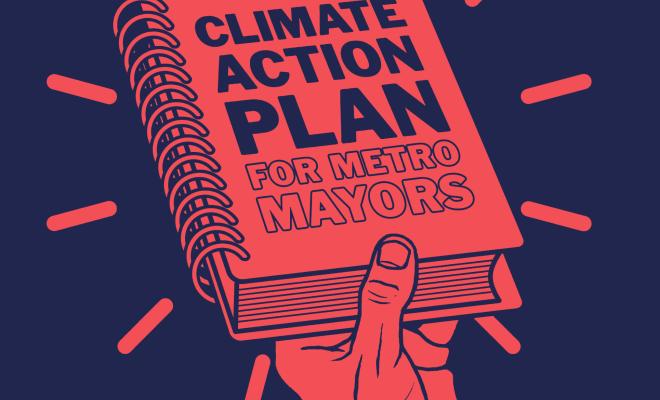21 Aug 2025
What can the new Mayor do for people and planet?
We're facing a climate and ecological emergency – the biggest threat we’ve ever seen to humanity’s existence. Whoever is elected as the new Mayor of the North East can’t single-handedly solve the crisis, but they must use the powers they have to make as big a difference as possible. They have a very important role to play in providing a guiding vision for the area, and will need to work with councils, businesses, local communities and the national government.
All of the councils that will make up the North East Mayoral Combined Authority (NEMCA) have Climate Action Plans or climate strategies in place, and the North of Tyne Combined Authority has various initiatives including a “Zero Carbon, Zero Poverty” 5-point plan. Some progress has been made, including the establishment of the North of Tyne Citizens’ Assembly to engage residents and the Newcastle and Gateshead Clean Air Zone, but action needs to be accelerated in several areas. This Climate Action Plan will help the new Mayor do this using the devolved powers and funding granted to them.
How green is the North East?
10 priorities for the new Mayor
- Ensure all plans, programmes and investment decisions are in line with what’s needed to address the climate and ecological emergency and are aligned with international, national, regional and local carbon reduction targets.
- Ensure that the voices of those most impacted by climate breakdown and nature loss are heard and given centre-stage in decision making.
- Support new green jobs. Protect workers and communities through a just transition to a low-carbon, nature-rich, circular economy, including linking skills training to low-carbon jobs.
- Ensure new housing is zero carbon and served by public transport using a strategic planning approach and their influence on constituent local planning authorities. Use brownfield regeneration and affordable housing funding to deliver zero-carbon homes in locations accessible by public transport and active travel.
- Take a leading role in bringing existing homes in the area up to high energy efficiency standards to reduce emissions and put an end to fuel poverty. Ensure that existing homes are protected from extreme weather events.
- Set targets to at least double public transport use, cycling and walking within the next 10 years. Step up action to meet these targets, such as investing in the right infrastructure and working with operators to ensure that public transport services are reliable, affordable and better connected, including restoring bus services to 2010 levels.
- Lead the development of a Local Area Energy Plan (LAEP) to increase the supply of clean, renewable energy, including supporting community energy initiatives and the roll-out of heat pumps.
- Ensure that the Local Nature Recovery Strategy (LNRS) for the area increases tree cover, protects and enhances nature, eliminates green space deprivation, and helps the area become more resilient to the impacts of climate change.
- Lead the development of a circular economy strategy for the region with local businesses and local authorities to both cut waste and resource consumption and boost the green economy.
- Ensure that left-behind deindustrialised towns like Easington, Peterlee and Stanley urgently receive net zero investment to create new opportunities for the people who live there, including new green jobs and skills as well as sustainable transport links.


